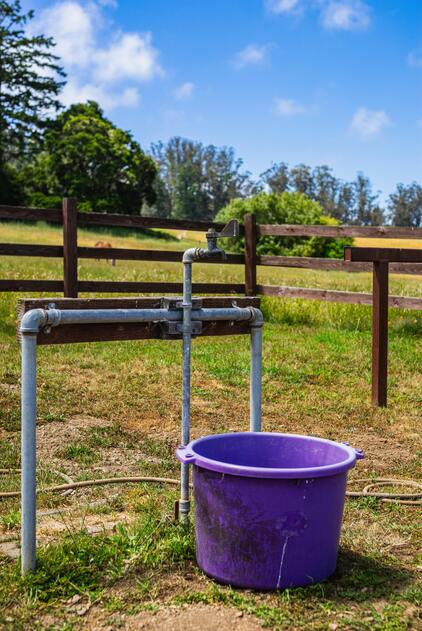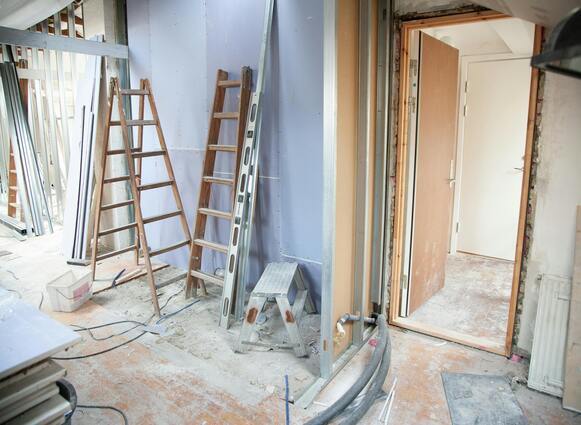Protecting Your Home with Ease Tackling Leaks, Decay, and Cracking Stucco
Maintaining the exterior of your home is crucial not only for its curb appeal but also for ensuring the longevity and structural integrity of the building. One of the most popular materials used for home exteriors is stucco, valued for its durability and aesthetic charm. However, even stucco isn’t immune to damage. This blog post dives deep into the common issues homeowners face with stucco, such as leaks, decay, and cracking, offering practical tips and solutions to keep your home in top shape.
Understanding the Importance of Home Exterior Maintenance
A well-maintained exterior acts as the first line of defense against environmental factors like rain, wind, and UV rays. Neglecting it can lead to a host of problems that may compromise the safety and comfort of your home. For homeowners, keeping an eye on the condition of their stucco is especially important, as early detection of damage can save thousands of pounds in repairs down the line.
Common Types of Stucco Damage
 Leaks
Leaks
Stucco is designed to be water-resistant, but improper installation or natural wear and tear can lead to leaks. Signs of leaks include water stains on interior walls and ceilings, damp patches, and a musty odor. Leaks can result in severe structural damage and mold growth if not promptly addressed.
Leaks often occur due to cracks in the stucco, poor sealing around windows and doors, or issues with the roofing. Ignoring these signs can lead to more extensive damage and higher repair costs. It’s essential to regularly inspect your home exterior and seal any gaps or cracks to prevent water intrusion.
Cracks
Cracks in stucco are not only unsightly but can also allow water to seep in, causing further damage. Hairline cracks are usually minor and can be easily repaired, but larger cracks may indicate more serious underlying issues. These could be caused by settling of the foundation, thermal expansion, or impact damage.
Understanding the root cause of cracks is essential for effective repairs. Using the wrong repair method might only offer a temporary fix, leading to recurring issues. Consulting a professional for an accurate assessment can save you time, money, and stress in the long run.
Decay
Stucco decay is another common problem, characterized by discoloration, crumbling, and the formation of bubbles or blisters on the surface. This typically occurs due to prolonged exposure to moisture, which weakens the stucco over time. Decay can compromise the structural integrity of your home and reduce its value.
Environmental factors like extreme weather conditions and poor drainage can accelerate stucco decay. Regular maintenance and timely repairs can help mitigate these risks, preserving the beauty and durability of your home’s exterior.
Steps to Identify and Assess Stucco Damage
DIY Tips for Early Detection
Identifying stucco damage early can save you from costly repairs. Start by conducting a visual inspection of your home’s exterior, looking for cracks, discoloration, and signs of moisture. Use a flashlight to examine darker areas and ensure you don’t miss any hidden damage.
Touch the stucco surface to feel for soft spots or areas that crumble easily. These may indicate underlying rot or decay. Pay close attention to areas around windows, doors, and the foundation, as these are common trouble spots.
If you’re comfortable with basic tools, consider using a moisture meter to detect hidden moisture within the stucco. High readings may signal a leak or other moisture issue that needs immediate attention.
Professional Assessment
While DIY inspections are beneficial, it’s advisable to seek a professional assessment at least once a year. Experts can identify subtle signs of damage that may go unnoticed and provide a comprehensive evaluation of your home’s exterior condition.
A professional assessment typically involves a thorough visual inspection, moisture testing, and sometimes even invasive testing to uncover hidden issues. This detailed approach ensures that no potential problem is overlooked, giving you peace of mind and a clear action plan for repairs.
Mitigation and Repair Options
 Temporary Fixes
Temporary Fixes
For minor issues like hairline cracks, temporary fixes can offer a quick and cost-effective solution. Using a quality crack filler or sealant can prevent water intrusion and further damage. Ensure the area is clean and dry before applying the product for the best results.
Temporary fixes are ideal for small cracks and minor damage but may not be suitable for more severe issues. It’s crucial to monitor the repaired areas regularly and consider more permanent solutions if the damage persists or worsens.
Professional Restoration
For more extensive damage, professional restoration is often the best course of action. This may involve repairing cracks, replacing damaged sections, or even applying a new layer of stucco. While this option is more expensive, it ensures a long-lasting and aesthetically pleasing result.
Professional restoration typically includes a detailed assessment, repair of existing damage, and application of protective coatings to prevent future issues. Investing in professional services can significantly extend the life of your stucco and enhance your home’s overall value.
Weighing Costs and Benefits
When deciding between temporary fixes and professional restoration, consider the long-term benefits and potential savings. While temporary fixes may seem more affordable initially, they could end up costing more in the long run if the damage reoccurs or worsens.
Professional restoration offers a more durable and reliable solution, often backed by warranties and guarantees. Weighing the costs and benefits of each option can help you make an informed decision that best suits your budget and needs.
Preventative Measures and Maintenance
Regular Inspections
Regular inspections are the first line of defence against stucco damage. Conduct visual inspections at least twice a year, focusing on vulnerable areas like windows, doors, and the foundation. Early detection of issues can prevent minor problems from escalating into major repairs.
In addition to DIY inspections, consider scheduling annual professional assessments. Experts can identify hidden damage and provide maintenance recommendations tailored to your home’s unique needs.
Protective Coatings
Applying a waterproof coating to your stucco can significantly enhance its resistance to moisture and environmental damage. These coatings create a barrier that prevents water penetration, reducing the risk of leaks and decay.
Protective coatings are available in various formulations, including clear sealants and pigmented options that can enhance the aesthetics of your home. Consult with a professional to choose the best product for your specific needs and climate conditions.
Proper Drainage
Ensuring proper drainage around your home is crucial for preventing moisture-related stucco damage. Clean gutters and downspouts regularly to prevent water from pooling near the foundation. Consider installing drainage systems if your property is prone to water accumulation.
Proper grading around your home can also help divert water away from the foundation. Simple landscaping adjustments can make a significant difference in preventing moisture-related issues and preserving the integrity of your stucco.
The Long-Term Value of Regular Home Maintenance
Maintaining a healthy home exterior goes beyond aesthetics; it’s an investment in the longevity and value of your property. Regular maintenance and timely repairs can prevent costly damage, enhance your home’s curb appeal, and provide a comfortable and safe living environment.
Addressing stucco issues promptly not only preserves the beauty of your home but also protects its structural integrity. By staying proactive and investing in regular maintenance, you can enjoy a durable and attractive exterior for years to come.
Taking the necessary steps to protect your stucco can save you from headaches and significant expenses down the line. If you’re unsure where to start or need professional assistance, don’t hesitate to reach out to experts who can guide you through the process.
In conclusion, maintaining your home’s stucco exterior requires vigilance, regular inspections, and timely repairs. By understanding the common types of stucco damage, taking preventative measures, and seeking professional help when needed, you can ensure your home remains beautiful and structurally sound for years to come.
For more information on home maintenance and expert advice, feel free to explore our additional resources or book a consultation with our team. Your home’s health and longevity are our top priorities.


 Temporary Fixes
Temporary Fixes

